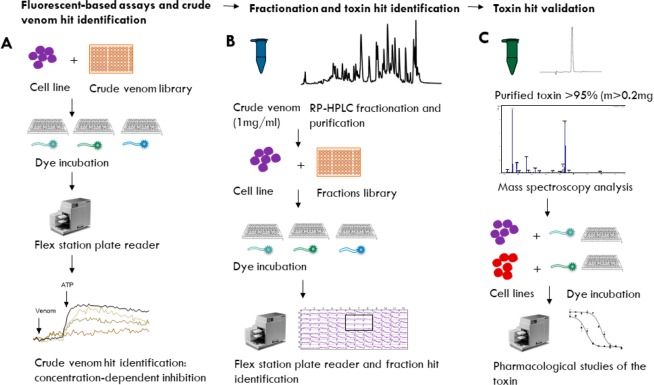Figure 1.
High-throughput screen of crude venoms against P2X receptors. (A) Crude venom (150 μL at a concentration of 1 g/L) is added to wells of a 96-well plate, then screened in triplicate using different fluorescent dyes (Fura-2-AM, YO-PRO-1, and FLIPR Calcium-6 assay) against 1321N1-hP2X4, HEK293-hP2X7, and HEK-hP2X3 stable cell lines. (B) Venoms identified as hits in the initial assay are fractionated using reverse-phase (RP) HPLC; then the fractions are screened in the HTS assays against the various P2X receptors to identify “hit” fractions with P2X activity. (C) Hit fractions identified are further fractionated using orthogonal chromatography techniques to identify the bioactive compound, which is then analyzed using mass spectrometry (MALDI-TOF, LC-MS, MS/MS). The toxin hit is then pharmacologically validated using two stable cell lines expressing the P2X receptor of interest.

